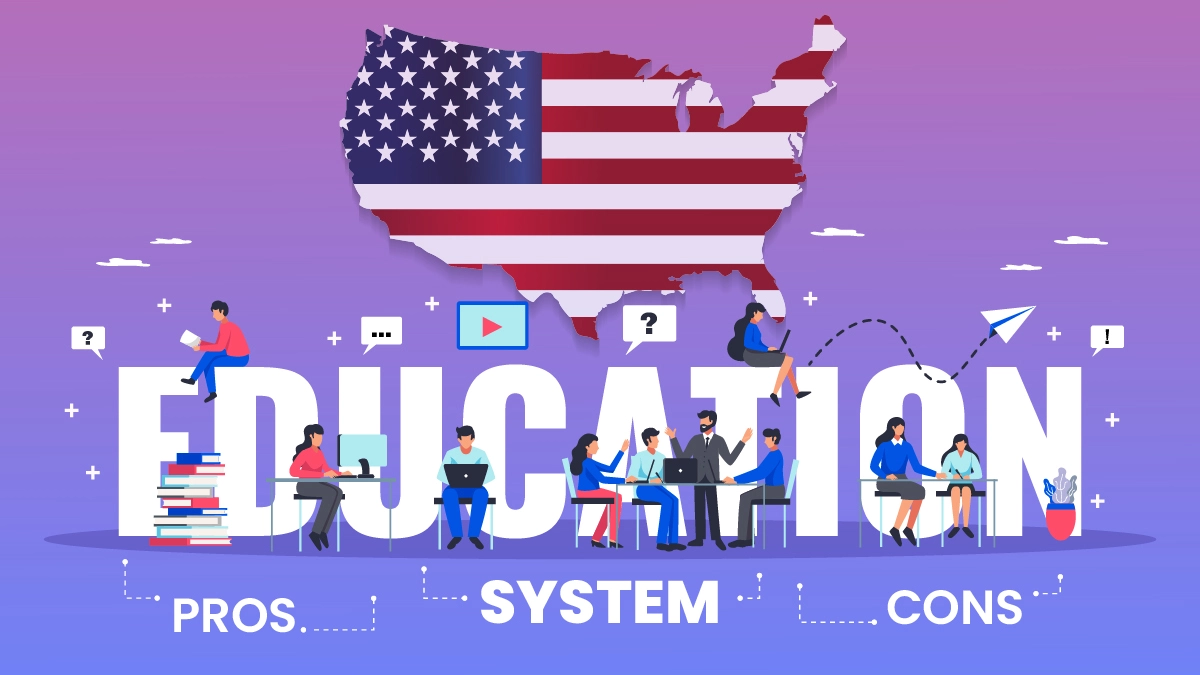Why is United States Education Falling Behind?
United States Education, In recent decades, concerns have grown over the perceived decline of the United States education system compared to other developed nations. Despite significant investments and efforts, American students consistently lag behind in international assessments of academic performance. This issue is complex, influenced by various factors ranging from funding disparities to pedagogical approaches and societal challenges. Understanding why the U.S. education system is falling behind requires an examination of multiple interconnected elements.
Table of Contents
Challenges in Funding and Resource Allocation
One crucial factor contributing to the educational decline is the unequal distribution of funding among schools. Education financing in the United States relies heavily on local property taxes, leading to significant disparities between affluent and disadvantaged districts. Schools in wealthier areas often have more resources, smaller class sizes, and better-paid teachers, while those in economically deprived regions struggle with overcrowded classrooms and insufficient materials. This imbalance perpetuates inequality in educational outcomes and widens the achievement gap.
Curriculum Standards and Standardized Testing
The emphasis on standardized testing has been a subject of debate within the U.S. education system. Critics argue that the focus on standardized tests narrows the curriculum, encourages teaching to the test, and fails to adequately measure critical thinking and creativity. This approach can stifle innovation and problem-solving skills among students. Additionally, varying curriculum standards across states can create disparities in educational quality and hinder nationwide competitiveness.
Teacher Recruitment and Training
The recruitment and retention of qualified educators are vital to a strong education system. However, teaching in the United States often faces challenges such as low salaries, high turnover rates, and insufficient professional development opportunities. These issues contribute to a shortage of experienced teachers, particularly in subjects like math and science. Furthermore, the lack of adequate training in new teaching methods and technologies can hinder educational progress.
Also Read: Income Inequality in America
Socioeconomic and Cultural Factors
The socioeconomic background of students plays a significant role in their educational success. Children from disadvantaged backgrounds often face barriers such as inadequate access to healthcare, housing instability, and limited family support. These factors can negatively impact academic performance and contribute to disparities in educational achievement. Additionally, cultural attitudes towards education and differing parental involvement levels can influence student outcomes.

Technology Integration and Access
While technology has the potential to revolutionize education, its integration into classrooms varies widely across the United States. Disparities in access to high-speed internet and digital devices can further exacerbate educational inequalities. Moreover, the effective use of technology for teaching and learning requires ongoing training for educators and adequate funding for infrastructure, which may not be consistently available.
Policy and Governance
The decentralized nature of the U.S. education system, with authority divided between federal, state, and local levels, can lead to inconsistencies in educational policies and practices. This fragmentation can impede efforts to implement systemic improvements and address broader challenges such as curriculum reform, teacher training, and funding equity. Clear, coherent policies aligned with evidence-based practices are essential for fostering educational progress.
Global Comparison and Competitiveness
In a globalized economy, educational attainment directly impacts a nation’s competitiveness and innovation capacity. Countries like Finland and Singapore have prioritized education reform with a focus on teacher quality, equitable funding, and comprehensive curricula, resulting in consistently high rankings in international assessments. The United States must learn from successful models and implement strategic reforms to regain its competitive edge in the global arena.
Conclusion.
The reasons behind the decline of the United States education system are multifaceted and interconnected. Addressing this complex issue requires a comprehensive approach that tackles funding disparities, curriculum standards, teacher quality, socioeconomic barriers, technology integration, and policy reform. By investing in equitable education, fostering teacher excellence, and prioritizing innovation, the United States can aspire to reclaim its position as a leader in global education. Ultimately, ensuring a strong and inclusive education system is essential for fostering individual opportunity, societal progress, and national prosperity.







